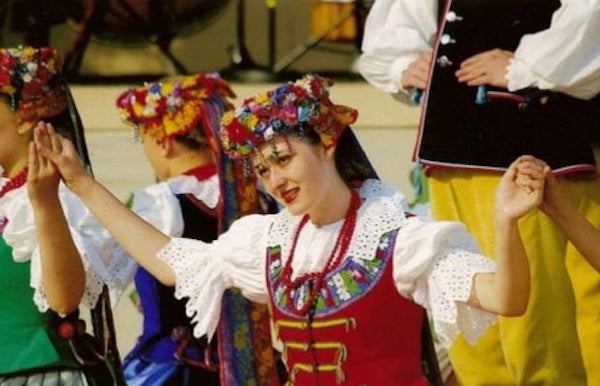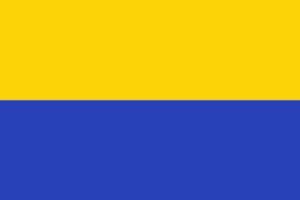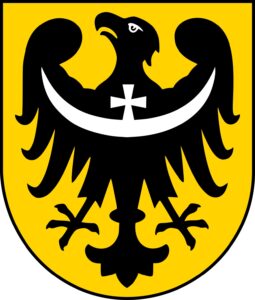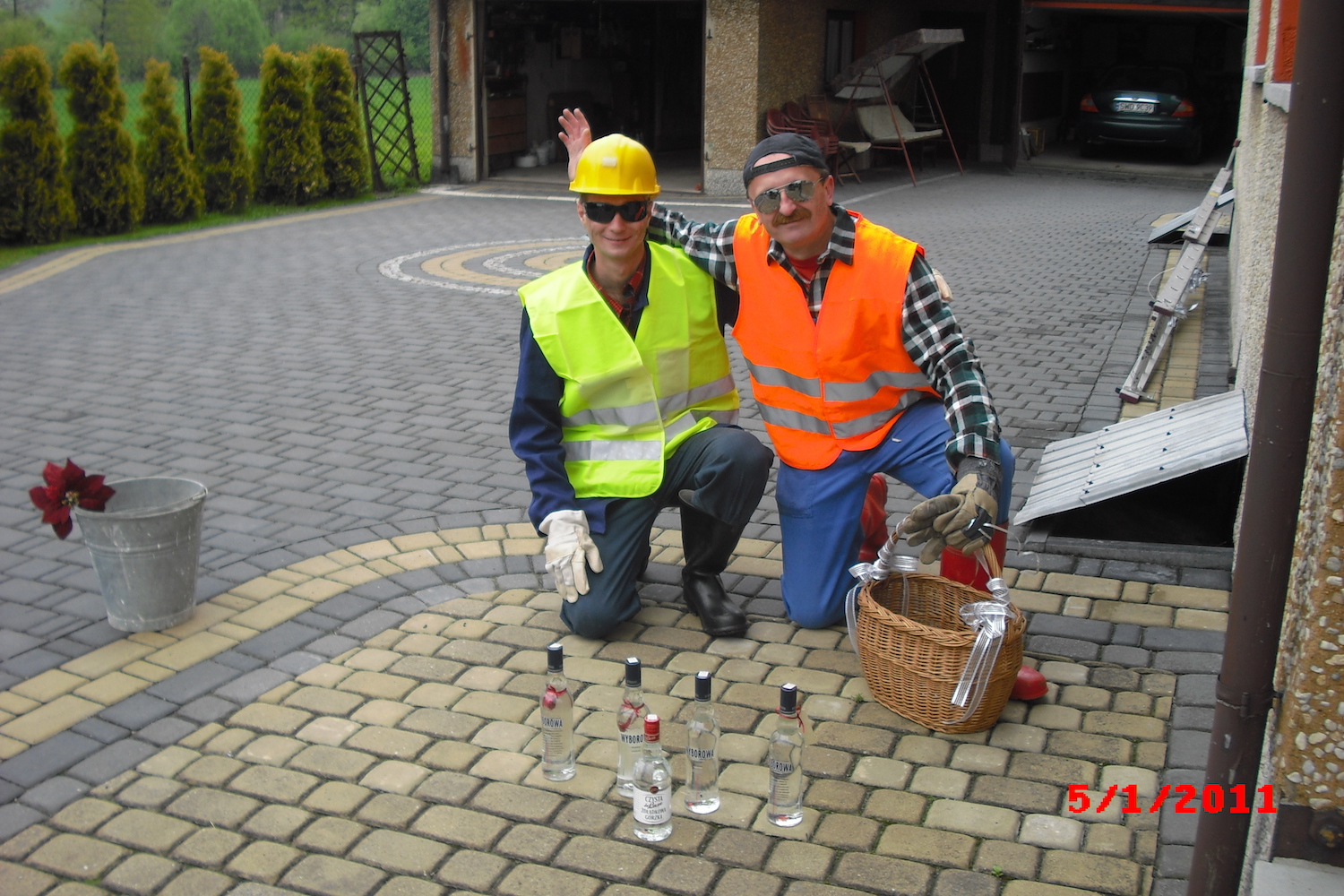
Silesian Culture
In Silesia, wealth and master craftsmanship are shown in the construction of palaces, cathedrals and churches. Architecture style ranges from ornate baroque to gothic. Silesia was known for mining, timber, textiles, and glasswork. It is clear from the gold ornaments unearthed around Wroclaw that there was already a high level of culture in the area in 300 AD.
Upper Silesia Flag and Coat of Arms


Lower Silesia Flag and Coat of Arms


Religion
Over the course of history, people in Silesia were predominately Lutheran or Catholic resulting in basically a 50-50% split. In an 1890 census, the split was 53% – 43% with Catholics in the majority. The western areas of Silesia were more Protestant and moving towards the east, it became more Catholic.
In Lower Silesia, Protestants accounted for about 75% of the population. In Upper Silesia, Catholics made up about 75% of the population. Protestant records were primarily written in German, while most Catholic records were in Polish or Latin. After World War II, the Germans were ousted from the area and the remaining Polish Catholics took over the region. Today, Silesia remains predominantly Roman Catholic.
The Jewish population was around 1%. In 1910, there were about 90,000 Jewish people in Silesia but by the end of World War II, that dropped to 10,000 survivors. The population increased after the war when some of the original Jewish Silesians returned.
Language
Silesians today are considered the largest ethnic group in Poland. Polish is the official language though Silesians were often bilingual in Polish and German. Historically, they spoke a local Silesian dialect, differing from mainstream Polish. In fact, some Silesians do not call it “Polish” but “Silesian”, because of a German as well as Czech influence. It is considered a spoken dialect rather than a written language.
As a result of its history, the population of Silesia was ethnically very mixed. Ethnicity often became an individual choice. Within the same family, one brother might say he was German, another might say he was Polish and a third might say he was neither German or Polish, but Silesian.
The Lord’s Prayer
Below is the Lord’s Prayer in four different languages (Courtesy of Wikipedia).
| english | Silesian | Polish | Czech |
|---|---|---|---|
Our Father who art in heaven, hallowed be thy name. Thy kingdom come, thy will be done, on earth, as it is in heaven. Give us this day our daily bread, and forgive us our trespasses, as we forgive those who trespass against us. And lead us not into temptation, but deliver us from evil. Amen. | Ôjcze nŏsz, kery jeżeś we niebie, bydź poświyncōne miano Twoje. Przińdź krōlestwo Twoje, bydź wola Twoja, jako we niebie, tak tyż na ziymi. Chlyb nŏsz kŏżdodziynny dej nōm dzisiŏk. A ôdpuś nōm nasze winy, jako a my ôdpuszczōmy naszym winnikōm. A niy wōdź nŏs na pokuszyniy, nale zbŏw nŏs ôde złygo. Amyn. | Ojcze nasz, któryś jest w niebie, święć się imię Twoje, przyjdź królestwo Twoje, bądź wola Twoja jako w niebie tak i na ziemi. Chleba naszego powszedniego daj nam dzisiaj. I odpuść nam nasze winy, jako i my odpuszczamy naszym winowajcom. I nie wódź nas na pokuszenie, ale nas zbaw od złego. Amen. | Otče náš, jenž jsi na nebesích, posvěť se jméno Tvé Přijď království Tvé. Buď vůle Tvá, jako v nebi, tak i na zemi. Chléb náš vezdejší dej nám dnes A odpusť nám naše viny, jako i my odpouštíme naším viníkům a neuveď nás v pokušení, ale zbav nás od zlého. Amen. |
Surnames
Very few Silesian surnames end with “ski.” Silesia was separated from Poland for almost 600 years. It was during this period of separation that the practice of using surnames developed. Therefore, different surnaming practices evolved in Silesia than in Poland proper. Also, the “ski” ending to Polish surnames arose first with the Polish nobility. It’s use did not extend to the lower classes until fairly recently. After the partitions when the partitioning powers demanded that everyone use surnames, some of the lower classes adopted surnames ending with “ski” because they thought this sounded more prestigious than the more common surnames.
Silesian Weaving
Two websites with information about weaver houses in Silesia.
Silesian Lacemaking
A specific village in Silesia is well-known for its lacemaking. Koniakow is a village in the Beskid Slaski mountain range of Cieszyn County in the Silesian Voivodeship.
Silesian DNA
The main objective of Project DNA Silesia is the discovery of a rich genetic heritage of the Silesians and their descendants.
Silesian Food
The origins of many Silesian-specific foods can be traced back to local farming traditions. While dairy and vegetable products used to be the staple food, meat was less common. Silesian food sometimes has a German or Czech influence due to the history of the borders. Some of the food in Silesia is similar to food in other parts of Poland, but there are some unique dishes specific to Silesia.
Examples of Silesian Dishes:
źur ślaski
Traditional Silesian sour rye soup – a nutritious soup with sausage, bacon and potatoes, on rye sourdough. It is a regional soup from Upper Silesia.
kwaśnica soup
This popular sauerkraut soup is one of the traditional Polish dishes originating from the mountainous region. It is often associated with the town Żywiec, located in the Silesian Voivodeship. Since it is prepared with fermented sauerkraut juice and smoked meat, it has a rich, smoky flavor, and is usually quite sour.
krupniok śląski
This is a Silesian blood sausage made with smoked pork, pig’s blood, and buckwheat, combined with salt, pepper, allspice, onions, garlic, and marjoram. The origins of this sausage can be traced back to the late 18th century.
wodzionka
Wodzionka is a traditional Silesian soup made with stale bread. The bread is soaked in water or broth, and then melted pork fat, garlic, bay leaves, salt, and pepper are added to the pot.
hekele
Hekele is a Silesian herring spread made with herring, a hard-boiled egg, pickled cucumbers, mustard, onion, and pepper.
kluski ślaskie
Kluski Śląskie (also known as gumiklyjzy) are traditional Polish dumplings that come from the Silesia region but are also very popular all over Poland. They are usually served with some kind of meat and gravy or mushroom sauce. They are made with just cooked mashed potatoes and potato starch (sometimes an egg).
babraczka
A semi-dense potato mass with cabbage and bacon. Served as a main course or in addition to krupniok.
kołacz ślaski
A rectangular cake produced in four varieties – one without a filling, and the other ones with an apple, cheese or poppy seed filling. It is made in the Opole and Silesian Voivodeships in Poland since the 10th century. Today, it is a custom to bring this cake to wedding guests a few days before the event.
Flavor of Poland Videos
The two links below are trailers for the videos. If you are a member of PBS, you can view the full episodes through PBS Passport.
Websites about Silesian Food
Culture.pl – Upper Silesia
Traditional Silesian Dishes
Popular Silesian Food
Silesian Old World Dishes
Silesian Weisswurst
Overview of Silesian Food
Silesian Roulade History
Silesian Porcelain
Due to an abundance of quartz and other natural minerals in Silesia, the area began developing high quality porcelain factories. There were at least twenty of these factories in operation through the 19th century, primarily in Lower Silesia.
Railroad Museum
Silesian Weddings
Marriages in Silesia are typically two-day affairs. As a custom, the bride and groom visit each other’s family before the wedding. Then the bride is held “hostage” in her house on her wedding day. When she attempts to leave, her departure is blocked until she gives a gift, usually vodka, to the acting “kidnappers”.
At the church, they say their vows and while departing, coins are tossed along their path and water is sprinkled upon them which symbolizes the importance of water and money to survive and be successful. The reception begins when the wedding couple take wine glasses and break them by dropping them. Then they get brooms to sweep up the remains to show how they will work together during difficult times.
This is not the only custom related to adult beverages. During the reception there is a special bartender designated to pour shots of vodka into any sort of drinking receptacle that is brought to him. Music and circle dances are very popular and erupt many times during the reception. Day two is another full-blown reception.
Historically, Silesian weddings were elaborate rituals. One account notes that the festivities began when the best man sometimes in a uniform and on a regal horse, would stop at each home and recite a lengthy invitation to the wedding in Polish. A great selection of food was laid out, including numerous pastries. There was music and dancing. Young men were encouraged to dance with the bride only after they offered a small monetary gift in exchange. A plate was set our for the men to deposit their payment for the pleasure of a dance. Often the celebration lasted more than two days and there was still plenty of food for those attending.

These current day Silesians are dressed to perform the wedding ritual of hindering the bride (who lived a couple of doors away) on her wedding day. They barricaded her driveway until she gave them a gift to allow her to pass to her wedding ceremony. A basket of drinkable goodies was apparently enough to allow her to pass.
Photo by Mike Stodolka